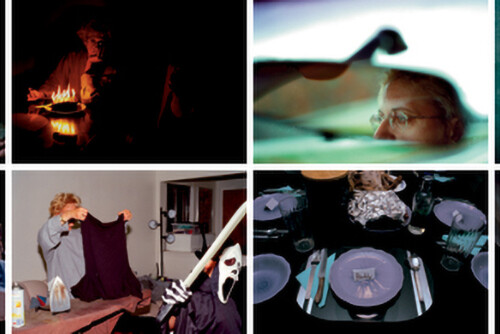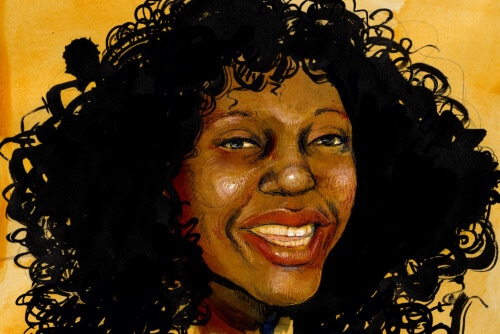Shocked Blank
The post-Heroic indexes, and is represented by, the marks in the photograph, the deep palimpsest-like tracks, which accrete and cover, and are defaced and erased in the ice. This blankness is a blanking as well. The dense and overlaid tracks repeat the mark of the footstep of the Heroic Age, the first arrivals, the lone witnesses to a romantic sublime landscape. The layering of tracks comments on habitation and the passing of human time—the mechanical industrial sublime replaces the former South Pole concept by effacing it.1 The new Pole is both marked by and replaces the idea of an unmarkable, vast, timeless land. The marks in Storage Berms at the South Pole are trashed, illegible, untraceable to a singular, heroic agent. Rather, these tracks violently blank out Ponting’s and Porter’s blanking. This latest form of blanking provides the central argument of Naomi Klein’s The Shock Doctrine: The Rise of Disaster Capitalism.2 In describing how free market economic policies, beginning after WWII, have exploited natural disasters to promote profit as well as policy change to insure future profits, Klein describes a blankness that is unlike the 19th Century imperial blankness of the map, whose white spaces were created only to be filled in.
Klein’s first chapter, “Blank is Beautiful,” describes the aftermath of Hurricane Katrina in New Orleans as an example of the way a natural disaster became an opportunity to politically remake the city to benefit capital, but not necessarily the displaced inhabitants. Klein agues that disaster capitalism not only exploits natural disaster, but produces disaster—through the techniques of shock therapy on the level of individuals, and through the kind of defense policies of “shock and awe” at the center of the U.S.-led occupation of Iraq. Shock and awe was designed to radically undo Iraqi society so that occupying forces might rebuild on terms favorable to their interests. While the blankness in Storage Berms at the South Pole is not reducible to the evacuating violence that Klein analyzes, a violent process of marking and overwriting is nevertheless at play in the composition and subject of Lê’s photograph. This new kind of footprint is unlike the original Heroic Age man-hauled and dog-sledded tracks that indexed singular, if nationalist effort and human-animal time frames and scales. It is, rather, a demonstration for a disembodied, many-limbed, and non-teleological global capital. The South Pole is in many ways a perfect, endless arrival point for a global capital flow, whose very maintenance of the new South Pole requires more attention than any past arrival or claim. The South Pole becomes claimable—beyond the limits of biology or the ecosystem, and beyond the restraints of any treaty limiting national or corporate profit—only within this new economy of extreme capitalism. The contemporary South Pole is a ready-made desert for “shock doctrine” economics.
Working within globalizing capital and big science in Antarctica is a small but persistent history within the U.S., the NSF: the Artists and Writers Program. Beginning as early as 1957, it has sent visual, sound, literary, and other artists-observers to the ice, including both Porter and Lê.3 Under the aegis and even encouragement of the NSF, we now have an incredible record, both descriptive and critical, of human presence in the Antarctic that would never have been possible if not for this underfunded program. Yet paradoxes similar to those of the Sierra Club’s promotion/ conservancy of Yosemite emerge: national interest in a non-national project, promotion at the cost of the pristine, obeisance to the state as a factor in its critique. The AAWP has managed beautifully to balance the requirements of the state and the need to support science with an allowance for artistic freedom. Although the populations of the southern hemispheric states like Australia and New Zealand incorporate Antarctica much more intimately into their national cultures, the size and quality of the U.S. program has produced a U.S.-authored commentary disproportionate to U.S. cultural involvement in Antarctica. We could even argue that the program keeps the U.S. in the game culturally, and in the important area of geopolitics and the media, or that the AAWP is the cultural wing of a neoimperial project in Antarctica, one that operates beyond the need to legally claim territory, and that surpasses the sundry claims of other nations no matter their histories and worthiness. The cultural imperialism of the U.S. is promoted, expressed, and yet also countermanded by the NSF AAWP. No matter what kind of art is produced—children’s books or high art depicting U.S. militarism—the state cannot fail to benefit.
But where do the future of consortia enter? Can the arts create a bulwark against capital, even as the arts are a form of capital? We’re back to the Sierra Club perplexity: does looking at any ideological filling-in of a blank national consciousness of Antarctica lead to freedom for development? Lê’s post-Heroic, post-ecological wasteland at the South Pole suggests another role for the constructed tabula rasa: that blanking the object may help preserve it from being filled in. Knowing as we do the constructedness of every approach to the radical place of Antarctica, can we imagine a politics of unmaking Antarctica that would create a blankness not to be filled, but to be left unserviceable and de-instrumentalized? For such a vision we may have to stare into Lê’s overexposed, layered track marks before they too melt into air.
- Alix Ohlin, “Andreas Gursky and the Contemporary Sublime.” Art Journal. 61.4 (2002): 22-35. [↩]
- Naomi Klein, The Shock Doctrine: The Rise of Disaster Capitalism. New York: Picador, 2007. [↩]
- I too was a guest of the program in 2004-5. Other contributors to the special issue supported by the AAWP include: Connie Samaras, Ann Aghion, Andrea Polli, and Anne Noble [↩]



